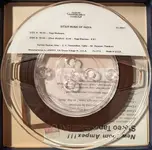B
bmg
Member
Taking a break from baking (tapes, not bread), I put up an old Deutsche Grammophon reel of Sitar Music From India from 1968:

I was amazed at how great it sounded, and was reminded of Ampex's near monopoly in the pre-recorded tape market of the 60's when I saw their logo on the label.
This made me wonder why on earth did they change their tape formula?
This one played through perfectly, with no issues at all (a far cry from what I'm dealing with lately.)

I was amazed at how great it sounded, and was reminded of Ampex's near monopoly in the pre-recorded tape market of the 60's when I saw their logo on the label.
This made me wonder why on earth did they change their tape formula?
This one played through perfectly, with no issues at all (a far cry from what I'm dealing with lately.)
